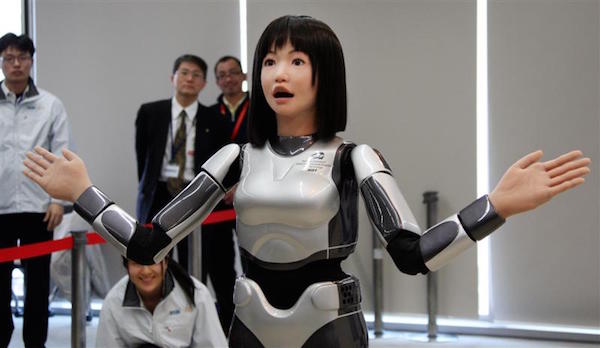The Ying Ao sink foundry in southern China’s Guangdong province does not look like a factory of the future. The sign over the entrance is faded; inside, the floor is greasy with patches of mud, and a thick metal dust — the by-product of the stainless-steel polishing process — clogs the air. As workers haul trolleys across the factory floor, the cavernous, shed-like building reverberates with a loud clanging.
Guangdong is the growth engine of China’s manufacturing industry, generating $615bn in exports last year — more than a quarter of the country’s total. In this part of the province, the standard wage for workers is about Rmb4,000 ($600) per month. Ying Ao, which manufactures sinks destined for the kitchens of Europe and the US, has to pay double that, according to deputy manager Chen Conghan, because conditions in the factory are so unpleasant. So, four years ago, the company started buying machines to replace the ever more costly humans.
Nine robots now do the job of 140 full-time workers. Robotic arms pick up sinks from a pile, buff them until they gleam and then deposit them on a self-driving trolley that takes them to a computer-linked camera for a final quality check.
The company, which exports 1,500 sinks a day, spent more than $3m on the robots. “These machines are cheaper, more precise and more reliable than people,” says Chen. “I’ve never had a whole batch ruined by robots. I look forward to replacing more humans in future,” he adds, with a wry smile.
Across the manufacturing belt that hugs China’s southern coastline, thousands of factories like Chen’s are turning to automation in a government-backed, robot-driven industrial revolution the likes of which the world has never seen. Since 2013, China has bought more industrial robots each year than any other country, including high-tech manufacturing giants such as Germany, Japan and South Korea. By the end of this year, China will overtake Japan to be the world’s biggest operator of industrial robots, according to the International Federation of Robotics (IFR), an industry lobby group. The pace of disruption in China is “unique in the history of robots,” says Gudrun Litzenberger, general secretary of the IFR, which is based in Germany, home to some of the world’s leading industrial-robot makers.
China’s technological transformation still has far to go — the country has just 36 robots per 10,000 manufacturing workers, compared with 292 in Germany, 314 in Japan and 478 in South Korea. But it is already changing the face of the global manufacturing industry. In the process, it is raising broader questions: can emerging economies still hope to follow the traditional route to prosperity that the developed world has relied upon since Britain’s industrial revolution in the 18th century? Or will robots assume many of the jobs that once pulled hundreds of millions out of poverty?
